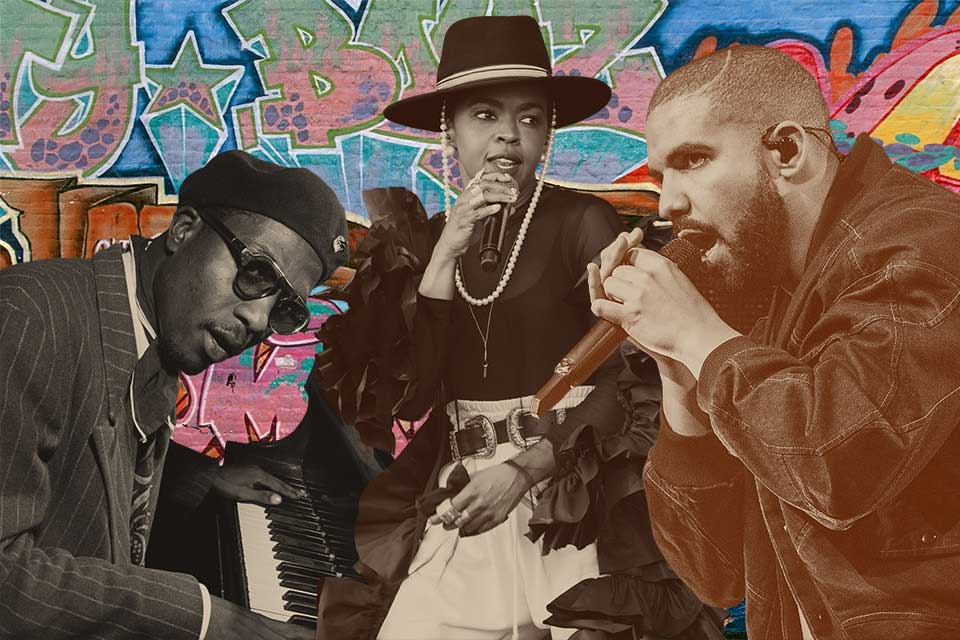
Hip-hop is not just about beats, rhymes, and catchy hooks; at its core, it is a rich medium for storytelling. The genre allows artists to craft vivid narratives, offering listeners a glimpse into their realities, dreams, struggles, and victories. Through storytelling, hip-hop has become a voice for the voiceless, a vehicle for expression that transcends the boundaries of mere entertainment.
Storytelling opens a portal for abstract concepts to be explored
One of the most powerful aspects of hip-hop is its ability to explore abstract concepts through storytelling. Whether it’s examining the intricacies of street life, love, loss, or identity, hip-hop’s storytelling has encouraged artists to tap into their best world-building mechanics.
A great example is Slick Rick, often regarded as one of the greatest storytellers in hip-hop history. His classic track “Children’s Story” takes listeners on a journey through the rise and fall of a young boy caught up in a life of crime, all told with such vivid detail that it feels like a cinematic experience. Through Rick’s masterful storytelling, we’re not just hearing a song—we’re watching the story unfold before our eyes.
In this way, storytelling in hip-hop opens a portal into the artist’s mind and world. It invites listeners to reflect on their own lives while simultaneously immersing them in the personal, and sometimes fantastical, worlds of the artist.
What is hip-hop storytelling?
Hip-hop storytelling is an artistic technique where rappers use lyrics to narrate a sequence of events, emotions, or experiences, often focusing on personal or social issues. Unlike traditional songwriting that might repeat a chorus or theme, hip-hop storytelling takes listeners on a journey from point A to point B, crafting a narrative that typically has a beginning, middle, and end.
Take Kendrick Lamar, for example, whose album good kid, m.A.A.d city is an autobiographical masterpiece. The project narrates his experience growing up in Compton, California, and the conflicting choices and struggles he faced. Each track serves as a chapter in his life, creating a cohesive and immersive experience for listeners.
What are the four types of storytelling?
In hip-hop, the four types of storytelling can be broken down into several distinct forms:
- Autobiographical Storytelling: This type focuses on the artist’s own life experiences, often delving into their upbringing, challenges, and personal growth. Notable examples include Jay-Z’s “December 4th” or Nas’ Illmatic, where the artists reflect on their early lives.
- Third-Person Storytelling: In this form, the artist tells a story from the perspective of someone else or through fictional characters. Songs like Slick Rick’s “The Moment I Feared” and Eminem’s “Stan” exemplify this, giving life to characters that embody certain social realities or emotions.
- Fantasy Storytelling: In some cases, hip-hop storytellers venture into surreal or fantastical scenarios. Tracks like OutKast’s “Da Art of Storytellin’” weave in imaginative elements while still remaining grounded in relatable emotions and themes.
- Conceptual Storytelling: This involves creating a broad, overarching concept that ties together an entire album or body of work. Albums like Kendrick Lamar’s DAMN. or MF DOOM’s Madvillainy explore themes like morality, identity, and society through complex narrative structures and interwoven ideas.
Who invented storytelling rap?
While storytelling has always been a part of music, Slick Rick is often credited as one of the earliest pioneers of storytelling in rap. His 1988 debut album The Great Adventures of Slick Rick set the bar for how hip-hop could transcend mere braggadocio and dive into the realm of intricate, well-crafted narratives. Tracks like “Mona Lisa” and “The Ruler’s Back” show Rick’s ability to blend humor, wit, and wisdom into stories that feel both entertaining and profound.
However, the tradition of storytelling in hip-hop can be traced back even further to early pioneers like Grandmaster Flash and the Furious Five, whose song “The Message” paints a stark, gritty picture of inner-city life in the early 1980s. These early innovators laid the groundwork for future generations to continue expanding the boundaries of hip-hop storytelling.
What genre is storytelling rap?
Storytelling rap is not a separate genre, but rather a style or subcategory within hip-hop. It spans across various subgenres, including conscious rap, gangsta rap, and even alternative hip-hop. Artists in any subgenre can employ storytelling techniques to convey their messages, whether they’re discussing political issues, personal struggles, or fantastical themes. From Tupac Shakur’s vivid depictions of life in the streets to J. Cole’s introspective narratives, storytelling rap thrives across the spectrum of hip-hop styles.
Conclusion
Storytelling in hip-hop is an art form that continues to evolve and inspire. It allows rappers to transcend the limitations of music by creating narratives that resonate with audiences on multiple levels. Through its many forms—autobiographical, third-person, fantastical, and conceptual—hip-hop storytelling creates a rich tapestry of voices and perspectives that define the genre’s cultural significance. Whether through Slick Rick’s vivid tales or Kendrick Lamar’s poignant life stories, the art of storytelling in hip-hop will always remain a cornerstone of its brilliance.

Dogli Wilberforce is a versatile professional skilled in both SEO copywriting and journalism. With a background in journalism, he brings a unique storytelling perspective to his work. This allows him to create captivating narratives that resonate effectively online, making him a dynamic asset in today’s content-driven world.
